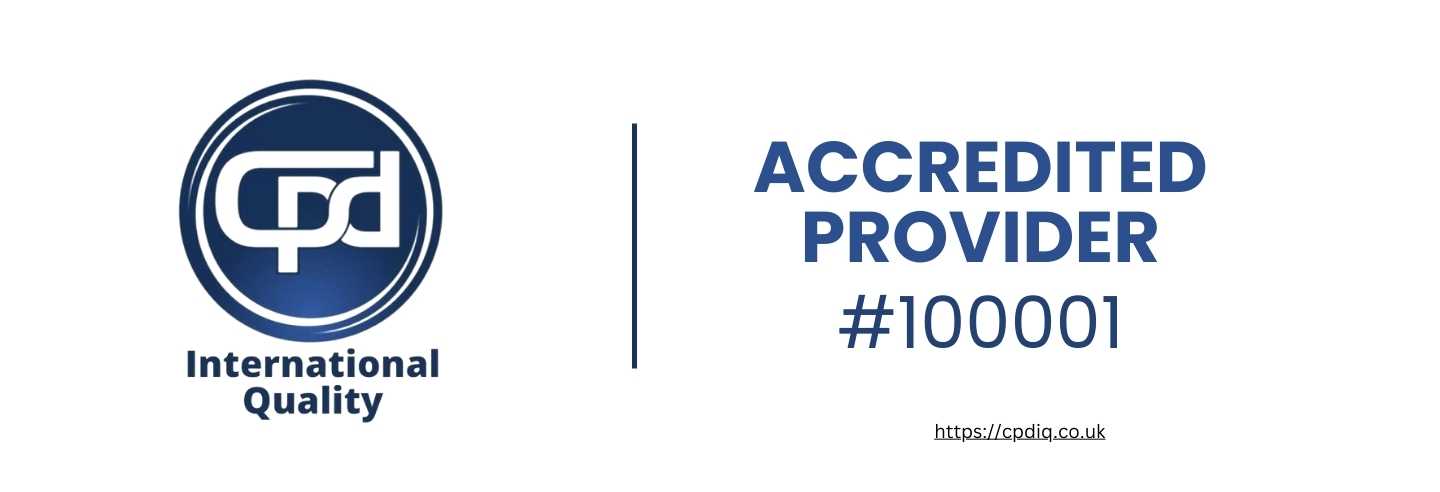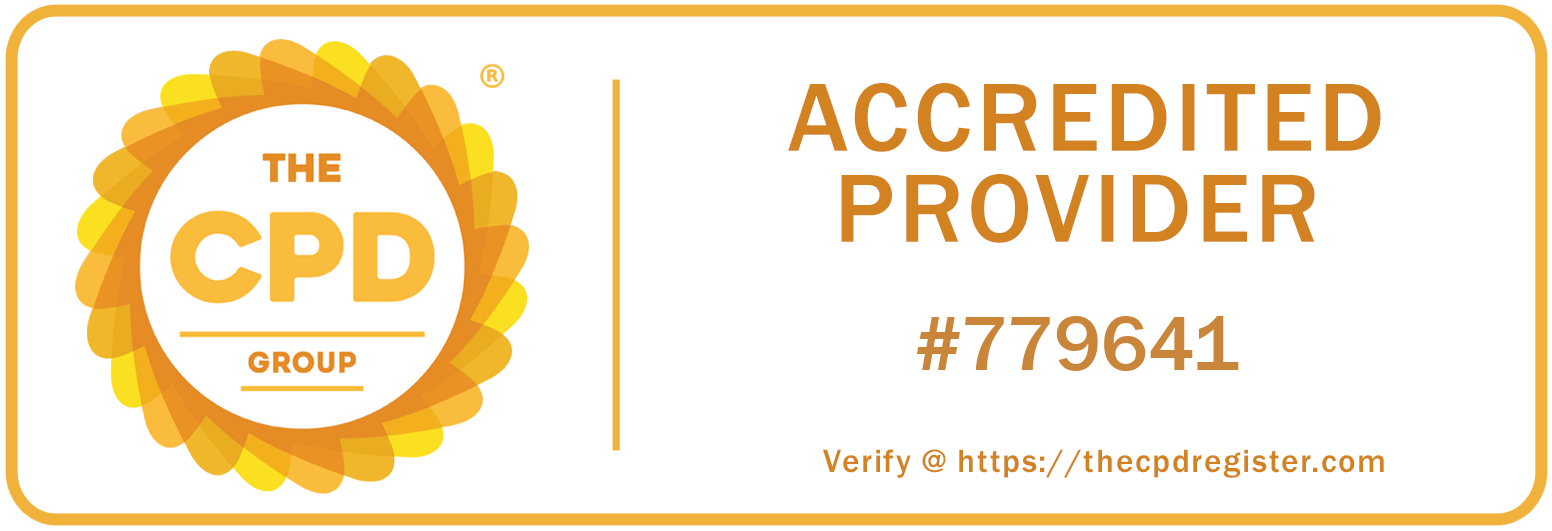
While looking at a salon's price list or reading a stylist's bio, have you ever come across the terms, what is a level 1 hair Stylist, what is a Level 2 hair Stylist, what is a Level 3 hair Stylist? As a customer, you may wonder why the different levels even exist and what the difference is, in terms of cost, for each Level Stylist. For future hairstylists, the question becomes a little deeper: “What do I need to do in order to get to Level 3, and why will it help my career?”
There is a good reason for the different levels. They are not there just to confuse you or to market the stylist's services in a different light. They are there to help you, the customer, know what to expect in terms of services and the price that the salon is going to charge you. It's all part of understanding the different hairstylist levels and job roles, which can help both clients and professionals make informed choices.
So, what is a Level 3 hair stylist? This title refers to the most high-achieving and most trusted professional hairstylist — someone with advanced skills, extensive experience, and often a loyal client base. They often handle more complex services and may charge higher prices, reflecting their expertise.
Quick Overview
Understanding hairstylist levels — from Level 1 to Level 3 — is essential whether you're a client choosing a stylist or a professional building a career. This guide explains what is a Level 3 hair stylist, how the levels differ, and why they matter in pricing, skill, and trust.
Whether you’re booking a haircut or planning your path as a stylist, this guide covers:
✅ What each hair stylist level means (Level 1, Level 2, Level 3).
✅ What is a Level 3 hair stylist — and why they charge more.
✅ How these levels align with pricing, services, and responsibilities.
✅ How the Hair & Beauty Awards help validate and support career growth.
✅ How to choose the right stylist for your needs and budget.
What you get from this guide is a complete answer to your questions, particularly on what a Level 3 Stylist is, since it is the most high-achieving and most trusted professional hairstylist. Be it a beginner stylist trying to figure out the career ladder or a customer interested in learning the reason for the salon's price variations, this guide will help you out.
Levels of Stylists in a Salon
A hairdresser typically progresses through three core levels. Level 1 is for beginners, while Level 3 is for advanced, professional stylists. In any area of hairdressing, going beyond Level 3 often leads to the title of Master Stylist. Stylists between these classifications are generally considered intermediate in skill and experience.

Any Level 1 stylist is still a qualified professional — just think of Level 1 as the starting point of the journey. This structure is part of a broader system used across the industry known as hair stylist levels.
Levelling and Progression
The best salons are always professional, always levelled up. Level 1 is foundational — and for a salon to grow, this level should be the most staffed and kept consistently busy. It's essential for building confidence and refining skill through regular, hands-on experience.
Consistency of Work Offered
When it comes to cuts and colour, Level 1 stylists typically handle simpler, more basic services. In contrast, Level 3 stylists are free to focus on advanced work, manage the salon floor, and mentor others — which also frees their time for complex appointments or salon responsibilities.
Training and Mentoring
A crucial part of the system is mentoring. Senior stylists support and guide less experienced team members, helping the salon continue to produce competent, confident professionals. This is also where hair stylist levels play a role in ongoing development and structured growth.
Pricing Differences
In many salons, these levels are reflected in the pricing structure. For example, a haircut from a Level 1 stylist will typically cost less than a haircut from a Level 3 stylist. That doesn’t mean Level 1 stylists are “bad” — they’re just earlier in their career path.
So, what is a Level 3 hair stylist? A Level 3 stylist is considered an expert in their field. They have mastered technical and creative skills, can handle intricate cuts and colour work, and often serve as mentors or leaders within the salon. This level of professionalism and trust is why they charge more.
Beyond Level 3
Some salons use even higher tiers, such as Level 4, Level 5, or titles like Creative Director. These roles are usually reserved for stylists with years of experience, specialities like colour correction or editorial styling, or leadership positions. Still, most professionals regard Level 3 as the key milestone of career maturity.
If you're aiming for qualifications, do you have a proper understanding of the classifications for the Hair & Beauty award? Knowing how stylist levels align with these qualifications can help you map out your training, goals, and expected competencies.
Understanding the Different Hairstylist Levels and Job Roles
For both stylists and clients, understanding this tiered system is incredibly valuable.
For Aspiring Stylists
Learning how hair stylist levels work in the industry gives you a clear roadmap. You can set realistic goals: achieving Level 1 competency in your first year, reaching Level 2 by your second or third, and aiming for Level 3 as you develop advanced skills. This understanding also helps you know what salons expect from you — technically, professionally, and in leadership.
Knowing how to plan your career path (including enrolling in advanced workshops for colour, cutting, or client management) is part of becoming a confident, in-demand stylist.
For Clients
Clients are often confused about why one stylist charges £30 for a haircut and another charges £60 — even at the same salon. This is where hair stylist levels make everything clearer.
- Level 1: An entry-level stylist who is gaining experience. They may work alongside a more senior stylist and usually offer services at a lower cost.
- Level 2: A mid-level stylist who has built more confidence and can offer a broader range of services at a reasonable price.
- Level 3: An advanced stylist capable of delivering complex cuts, custom colours, and full transformations. If you’ve been wondering, what is a Level 3 hair stylist, this is the standard of expertise you can expect.
By understanding this system, clients can decide what’s right for their needs. A simple trim may only require a Level 1, whereas a balayage correction or complete restyle is better suited to a Level 3 stylist.
This classification also manages expectations. Clients know not to expect “celebrity-level” transformations from Level 1 stylists, and junior stylists aren’t pressured to take on work beyond their current ability. It’s a win-win system that supports professional growth and builds client trust.
What Is a Level 1 Hair Stylist?
When you hear the term Level 1 stylist, think of it as the entry point to the profession. These are the stylists who are just beginning their professional career path, having completed formal hairdressing training, an apprenticeship, or a college course. If you've ever asked yourself, what is a level 1 hair stylist, this is your answer.

A Level 1 stylist is usually:
- Newly qualified or recently licensed
- Focused on building their confidence in the salon environment
- Developing their foundational skills with real clients
Putting technical knowledge into practice is equally important during the early stages of a career. Without hands-on work, theoretical knowledge about haircuts, colours, and blow-dry techniques does not translate into experience and technique muscle memory.
Services They Typically Handle
Level 1 stylists start with simpler services which focus on maintaining client relationships, boosting confidence, and improving work speed.
- Basic trims and simple haircuts
- Blow-drying and styling
- Root touch-ups or single process colours
- Shampooing and conditioning treatments
While they may not be trusted with dramatic precision cuts and transformative styles, they are appropriately guided and mentored by senior stylists, ensuring that clients receive appropriate service.
Understanding the difference between stylist levels is helpful — especially when considering what is a level 3 hair stylist, as these are the professionals who typically handle more advanced, high-skill services and often guide junior team members like Level 1 stylists.
Why Choose a Level 1 Stylist?
Generally, the first appointment with a Level 1 stylist is the most reasonable pricing option due to the discount schemes most salons implement for Level 1 stylists. If performance expectations are simple, booking a Level 1 stylist is a safe bet.
Even Level 1 stylists deserve to be credited for their work. Creativity and fresh ideas, especially with the right attitude, contribute to a positive experience in the salon.
What Is a Level 2 Hair Stylist?
If Level 1 is the entry point, then Level 2 represents growth and consolidation. If you're wondering what is a level 2 hair stylist, they are professionals who have moved beyond the beginner stage, usually with at least a couple of years of salon experience under their belt.
The Developing Professional
A Level 2 stylist is:
- More confident in core skills such as cutting, colouring, and styling
- Starting to build a loyal client base, with clients returning specifically to book with them
- Still refining techniques and learning advanced methods, but no longer requiring as much close supervision as a Level 1
This stage is where stylists begin to define their personal style and strengths. Some may show a natural flair for colouring, while others shine in cutting or styling.
Services They Typically Handle
Level 2 stylists can offer a wider range of services than Level 1s. They are comfortable handling:
- A variety of women’s and men’s cuts
- Highlights, balayage, and foiling techniques
- Styling for special occasions (like weddings or events)
- More complex colouring jobs, though extremely tricky corrections may still be left to senior stylists
Under the supervision of more experienced stylists, they could begin offering higher-level services and preparing for Level 3. This is a key stepping stone for those aiming to become advanced stylists. If you're curious about the next level, understanding what is a level 3 hair stylist helps you see how the journey continues toward mastery.
Building Independence
For Level 2, one of the main characteristics is independence. Unlike Level 1 stylists, who receive the most supervision, Level 2 stylists have more control and can manage appointments. They are able to complete their tasks and produce results without help.
Why Work with a Level 2 Stylist?
Level 2 stylists offer an ideal combination of cost and value. Their pricing is higher than Level 1, but lower than Level 3. Level 2 stylists are a good option for those wanting more complex services without high-end pricing.
For instance, a Level 2 stylist will provide reliable results for customers requesting balayage, highlights, or layered cuts. While they are still mastering their skills, Level 2 stylists have confidence and professionalism.
The Transition in Their Career
Level 2 is the turning point for prospective stylists. The emphasis now is on:
- Building a loyal clientele
- Mastering advanced skills
- Being more efficient (providing services in less time while maintaining quality)
- Developing leadership skills for Level 3 preparation

Salons frequently encourage Level 2 stylists to take part in workshops, advanced colour training, and other external courses to support ongoing professional development.
Understanding Level 1 Compared to Level 2
In short:
Level 1 includes the basics and application in practice. Clients benefit as services are offered at a lower price, while stylists concentrate on honing their practical skills. If you're wondering what is a level 2 hair stylist, the answer lies in the contrast — they have moved beyond the basics and begun developing a more refined, independent approach.
Level 2 develops confidence, skill, and independence. Clients receive services at a mid-range price, but with a greater degree of consistency, while stylists begin to build their professional identity.
Both levels are critical in the developmental pathway. Without the solid groundwork at Level 1 and sufficient progress at Level 2, attaining Level 3 would be impossible. Highly skilled stylists work at Level 3 and are frequently regarded as mentors.
What Does a Level 3 Stylist Do?
If Level 1 establishes the groundwork, and Level 2 is the development period, Level 3 is the stage at which a stylist is considered to have advanced confidence, experience, and flexibility. This is the stage most stylists hope to achieve, as it demonstrates not only technical prowess but also professional maturity. So, what is a level 3 hair stylist? It is a highly trained and experienced professional who performs at the highest standard within the salon.
The Advanced Professional
At this point, the professional may be called a "senior stylist" or "expert" within the salon. They have years of salon experience. At this level, the professional is able to:
- Execute advanced haircuts and precision styles
- Perform balayage blends, corrective colour work, and multi-tone highlights
- Personalise styles according to varying face shapes, hair textures, and different lifestyles
- Confidently consult with clients and provide tailored recommendations
At this point, Level 1 stylists are still building skills. Level 2 stylists are still developing consistency in their work. Level 3 stylists, however, work with full confidence and independence.
Client Trust
The loyal clientele base a Level 3 stylist builds is a major indicator of their success. Clients book appointments with Level 3 stylists because of the trust they have developed over the years. These stylists are often the "go-to" professionals for major transformations, colour corrections, and special appointments such as weddings.
This trust isn’t built overnight — it is established over time through consistent results, effective communication, and continued professional growth.
Mentor Responsibilities
At Level 3, having a mentorship role is another key characteristic. These stylists support and guide junior team members. This can include:
- Supervising Level 1 and Level 2 stylists during their bookings
- Teaching and demonstrating advanced methods
- Modelling professionalism in the salon and showing care for clients
Because of all these responsibilities, Level 3 stylists often take on mentorship roles. This is why they hold such a strong reputation within any salon team.
What Is a Level 3 Hair Stylist Job?
When we refer to a Level 3 stylist’s job, we do not mean just cutting and colouring hair. The role goes far beyond the salon chair and includes several different aspects of the profession, such as leadership, mentoring, and client management. If you're wondering what is a level 3 hair stylist, it’s someone who has advanced beyond technical skills to become a key professional within the salon environment.

A Level 3 stylist is typically responsible for:
- Advanced Services: Performing complex, specialised, and advanced techniques such as corrective colouring, precision cuts, keratin treatments, and hair extensions.
- Client Consultations: Carrying out detailed, high-level consultations for clients who want major changes. These stylists must combine creative vision with technical knowledge to achieve realistic and satisfying results.
- Mentoring and Training: Assisting junior stylists by demonstrating techniques, providing feedback, and supporting ongoing learning. They may also help salon managers during training sessions.
Salon Leadership
In many salons, Level 3 stylists take on semi-managerial responsibilities. They may oversee scheduling, participate in marketing campaigns, and help promote the salon's services and retail products.
Client Relationship Management
Long-lasting relationships are built strategically with clients at this level. High client retention — and especially word-of-mouth referrals — is a clear indicator of a Level 3 stylist’s value to the salon.
Problem Solving
Level 3 stylists are relied upon to solve problems on the fly. Whether it’s correcting a colour mishap, managing an unhappy client, or stepping in during busy periods, their expertise makes them dependable and adaptable.
Pricing and Value
Because of their advanced expertise, Level 3 stylists charge higher rates. Their services are time-consuming and technically demanding, requiring years of experience and mastery. Most clients understand the value of precision and artistry — and are willing to invest in it.
This is one reason why hair stylist levels are often tied to a salon’s pricing structure. Each level represents a different stage of development, which helps clients choose services that match both their budget and expectations.
Career Path Beyond Level 3
Many stylists consider Level 3 the peak of their in-salon career. However, others go on to:
- Become Level 4 or Master Stylists, taking on greater leadership responsibilities
- Manage a salon or even start their own business
- Specialise in a niche, such as editorial styling, education, or product development
Level 3 opens more doors — it’s a platform, not a plateau. The opportunities to continue learning and growing are endless.
The Importance of Level 3
Understanding the different hairstylist levels and job roles is important for both clients and professionals.
For clients: Level 3 means you’re working with a highly skilled and experienced stylist. If you’re looking for a transformation, correction, or a fully customised style, this is the level to book.
For stylists: Level 3 is a mark of dedication, consistency, and expertise. It reflects your ability to deliver high-end results, support your team, and act as a role model within the salon. It’s a professional milestone and a point of pride.
Level 2 Stylist vs. Level 3 Stylist
What is the difference between a Level 2 stylist and a Level 3 stylist? On paper, the differences may seem subtle — both can cut, style, and colour hair. However, in practice, the distinction becomes much clearer. The Level 3 stylist brings greater experience, stronger confidence, and added responsibility. There is, in fact, a significant difference between these two stages of professional growth.
If you're trying to understand what is a level 3 hair stylist, it's helpful to first recognise how they differ from Level 2 — and how each fits within the broader system of hair stylist levels.
Experience and Training

- Level 2: Generally a stylist with a few years of experience working in a salon. They’ve progressed from the basics and have developed consistency and skill, but are still refining certain techniques.
- Level 3: A senior stylist role, with years of additional practice. They possess a wide range of reliable, advanced techniques and are trusted to deliver high-stakes, creative, or corrective services.
Services Offered
- Level 2: Handles a solid range of cuts, colours, and styles. However, they may still refer complex corrective colour or specialised treatments to more senior team members.
- Level 3: Masters of precision and complexity. They confidently perform advanced balayage, precision cutting, and are often called upon to fix colour mistakes done at home or elsewhere. This is a core part of what is a level 3 hair stylist — technical excellence and reliability in challenging scenarios.
Client Base
- Level 2: Still in the process of building a loyal clientele. Repeat bookings are increasing as their reputation grows.
- Level 3: Has a well-established, loyal client base. Clients often request them by name and are willing to wait for available appointments due to their trust in the stylist's skill.
Pricing
- Level 2: Charges mid-tier prices. Their rates reflect both affordability and a growing level of expertise.
- Level 3: Charges higher prices in line with their advanced skills, demand, and the premium quality of services provided. Their time is often booked well in advance.
Leadership
- Level 2: Focused primarily on developing their own skills and autonomy in the salon setting.
- Level 3: Often helps lead the salon team. They mentor Level 1 and 2 stylists, model professionalism, and contribute to the positive culture and standards of the salon. This leadership role is a key part of understanding the different hairstylist levels and job roles.
Do You Have a Proper Understanding of the Classifications for the Hair & Beauty Award?
The Hair and Beauty Award is a formal classification offered nationally within the hair and beauty industry. It enables salon owners to recognise the competence and skills of hairstylists. This system helps standardise hair stylist levels and offers recognition that is not limited to one specific salon.

What Are the Classifications?
The Hair and Beauty Award classifications are designed to establish and promote professional recognition for hairstylists. The key aims are to:
- Define what a stylist is expected to do at a particular stage in their career.
- Offer transferable qualifications that allow stylists to move between salons with ease.
- Provide clients with assurance that a stylist has achieved a recognised, formally assessed qualification.
For instance, if you’re wondering what is a level 3 hair stylist, these awards help clarify that. Level 3 hairdressing qualifications typically include:
- Advanced techniques in at least four different hair cutting and colouring methods
- High-level client consultation and care
- Salon management skills
- Understanding of complex health and safety procedures related to the salon environment
These qualifications align closely with the industry’s established hair stylist levels, helping both professionals and clients understand who does what, and at what level of expertise.
Why These Awards Matter
For stylists: These awards act as critical career milestones. Achieving Level 3 or above not only improves employability but also opens access to more senior roles and supports the justification for higher service pricing. In the journey of understanding the different hairstylist levels and job roles, these qualifications give structure and direction.
- For clients: These awards validate the claims of expertise made by their chosen stylists. Seeing that a stylist has formal recognition reassures clients about the quality and professionalism of the service they are receiving.
- For salons: Promoting qualified team members enhances the salon’s overall credibility. It assists with marketing, builds client trust, and supports the growth of a strong, reliable team.
Both clients and professionals benefit from a clearer understanding of hair stylist levels and formal industry awards. Whether you're a stylist aiming to progress or a client choosing a service provider, knowing exactly what is a level 3 hair stylist — and how they’ve earned that title — brings transparency, trust, and professionalism to every salon experience.
Conclusion
The hairdressing profession is structured with levels for a reason. Clarity, fairness, and progression throughout the industry benefit clients and stylists alike.
Level 1 stylists are beginners, fresh out of training. They are eager to gain experience and typically provide services at lower rates.
Level 2 stylists are at the intermediate stage. With growing confidence and autonomy, they offer a balance between affordability and skill.
Level 3 stylists are the seasoned professionals. Highly skilled and confident, they often act as mentors within the salon. These stylists command higher prices and deliver advanced services, including complex colour corrections, precision cuts, and personalised consultations. If you’ve ever wondered what is a level 3 hair stylist, they are the experts who have reached a senior status through experience, training, and proven ability.
Knowing these differences is important. For clients, it helps you choose the right stylist for your needs and your budget—whether it’s a quick trim, a stylish colour, or a more intricate transformation. For stylists, understanding the levels shows the career path available to you and demonstrates how growth, learning, and dedication can move you from entry-level to a trusted senior professional.
The Hair & Beauty Awards classifications further reinforce these career levels by offering legitimate, nationally recognised proof of skill. These awards help stylists advance their careers while increasing client trust.
So, whether it’s your first day as a stylist or you’re taking the next step in your professional journey, each level is an achievement. It’s important to recognise that Level 3 is not just a title—it’s a sign of a stylist’s experience, exceptional skills, and deep commitment to the profession.










